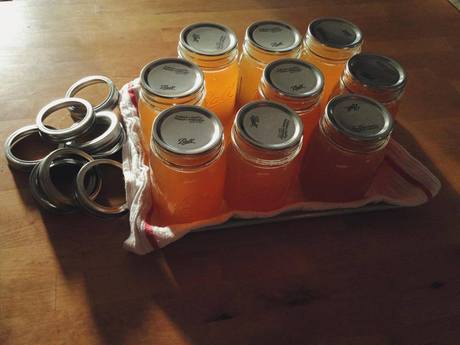Pressure canning and reality
Last night I taught the final class in a food preservation series with Whole Foods Market Austin, the topic: pressure canning stocks. Though I’ve taught this class numerous times (a couple times in Connecticut and once last year in Austin) my hopefulness that I could cram it into a 2-hour vs. 3-hour slot was dashed by pesky reality. As the class came to a close I wrapped up by bringing the canner to pressure so attendees could hear the weight-gauge’s steady rocking and then immediately turning it off. The pressure dropped just as the last attendees passed out of sight range from the classroom window, figures.
This misjudgement of time meant there were still unprocessed jars of stock in the canner that needed canning. I brought home the depressurized but still very hot canner (canning instructor living on the edge) and heard pinging lids and near catastrophic sloshing and jars-crashing-into-each-other noises as I drove home. [Now, don’t mistake pinging for safely canned. These jars didn’t get the 20 minute processing time (at 240 degrees) to make them safe for shelf storage. We can seal a jar easily via simple mechanics, but that has nothing to do with safety.]
After the wild ride home, I debated the merits of starting over (which is what I thought I should probably do)—dumping the stock out of the jars, reboiling the pot and putting it back into clean jars—or just leaving the jars in there and bringing the canner back to pressure and fully reprocessing (which is what I did). To my experimental delight, all 9 jars sealed after their second round of pressurization and processing.
